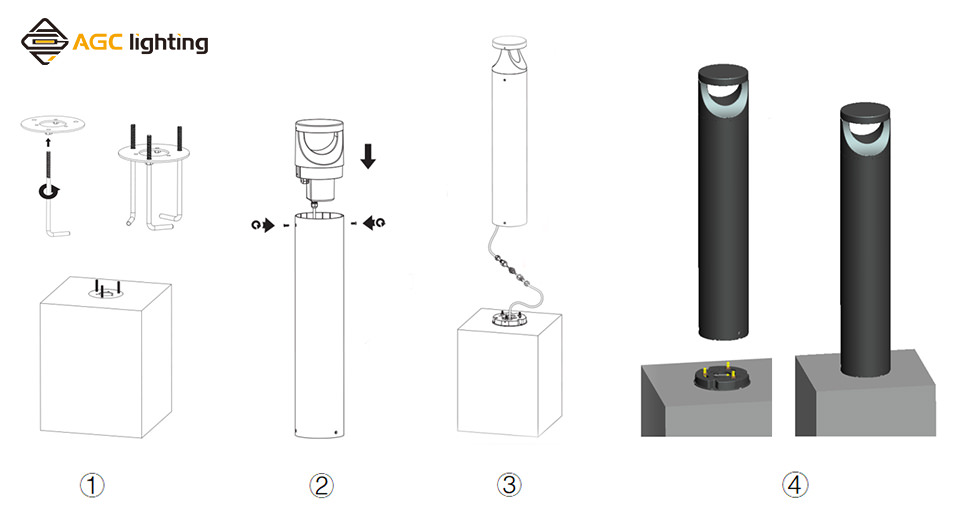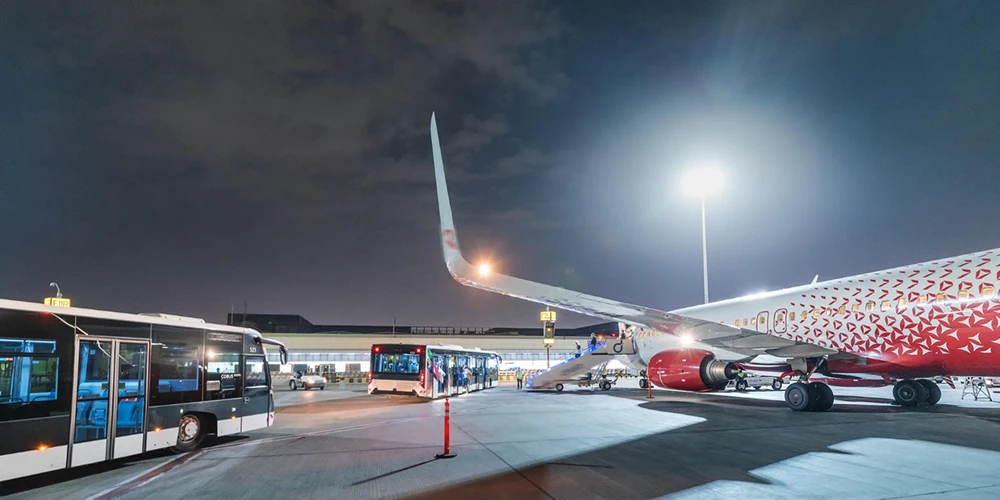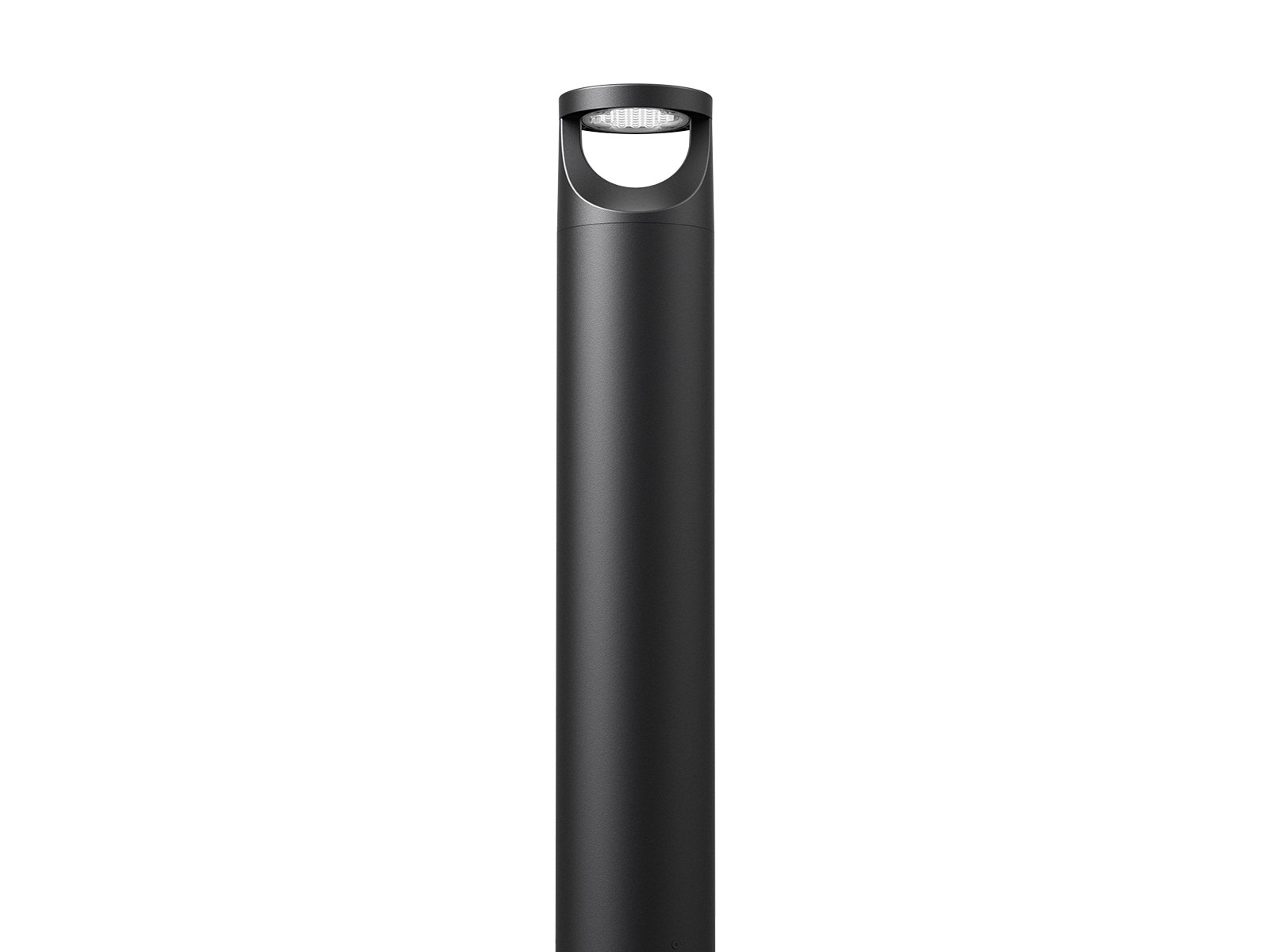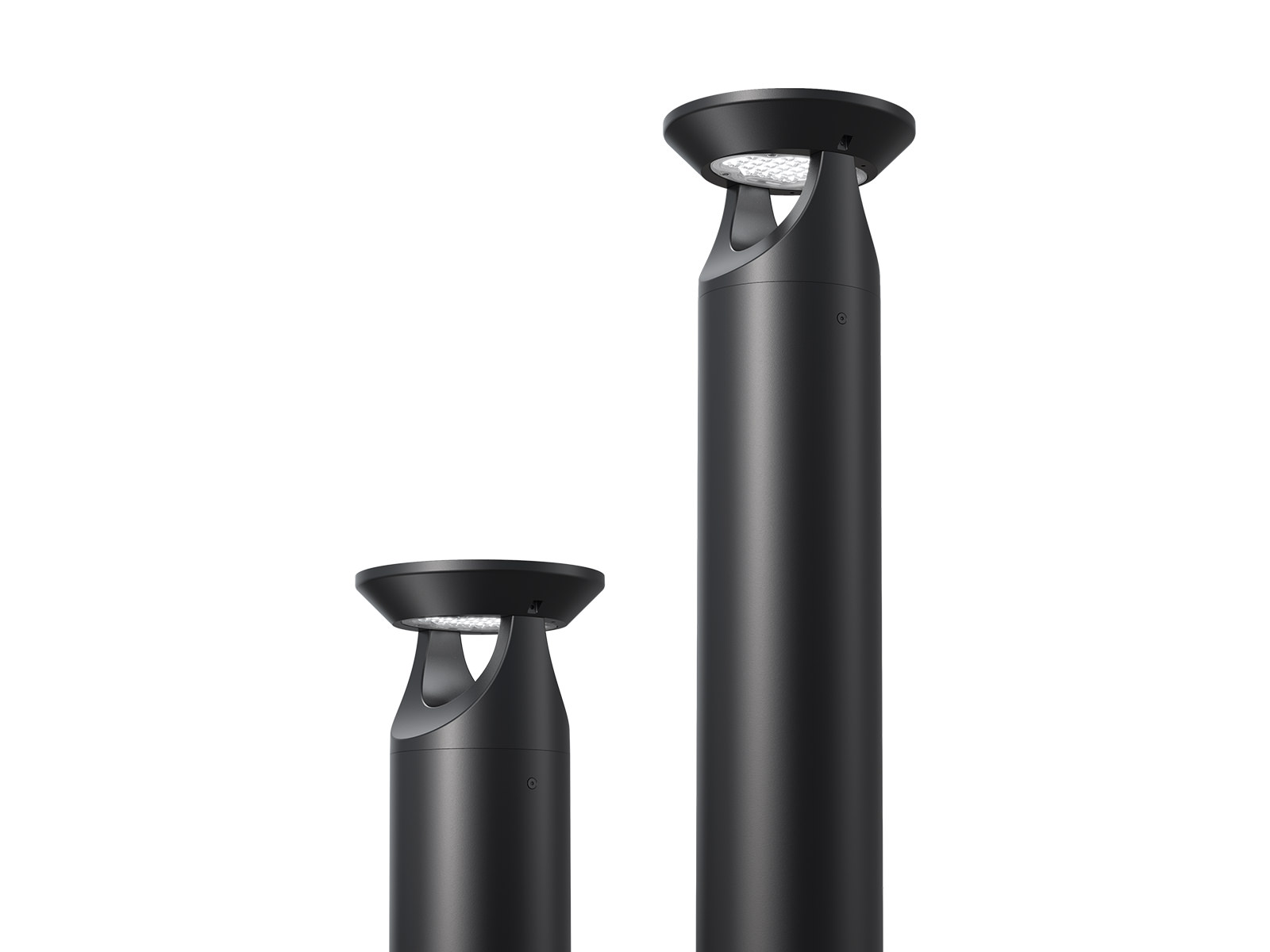Regardless of the function and type of lighting fixtures, the choice of light sources plays a crucial role in determining lighting quality and management. LEDs are renowned for their exceptional advantages, such as longer lifespan, higher efficiency, lower energy consumption, stable performance in cold temperatures, and directional light. These features make LEDs an ideal light source for outdoor bollard lights.
Bollard lights are typically used for outdoor lighting applications, including walkways and streets. While they may seem similar to streetlights, bollard lights are shorter and do not require high poles. Moreover, streetlights are primarily designed to provide clearer visibility for pedestrians and vehicles, whereas bollard lights are mainly intended for orientation and guidance, offering lower levels of illumination. As a result, the considerations for bollard lights differ from those for streetlights.
In this post, we will discuss the four key considerations for bollard lights. We hope this information will help you better understand bollard lighting.
What are bollard lights
A bollard light is a type of outdoor lighting fixture that is mounted on a bollard, a post originally used in nautical settings for tying up ships at docks or wharfs. Today, the term "bollard" also refers to posts used to block vehicles from entering certain areas, guide traffic, and protect pedestrians. Bollards can be cylindrical, round, or even square.
The upper and lower housings of bollard lights are typically made of cast aluminum or stainless steel, and these housings are usually removable for maintenance. There are also immovable bollard lights, often made of concrete, commonly installed along roadsides.
Bollard lights generally have a Type V lighting distribution, meaning the light is evenly distributed in all directions. The light is emitted either from the top or the sides of the bollard. To minimize light pollution and unwanted light spill, shields can be added to control the light distribution.
Bollard lights are commonly used to illuminate pathways, walkways, parking lots, and other outdoor areas. They are also ideal for creating a relaxing atmosphere and highlighting plants with their soft, ambient light.
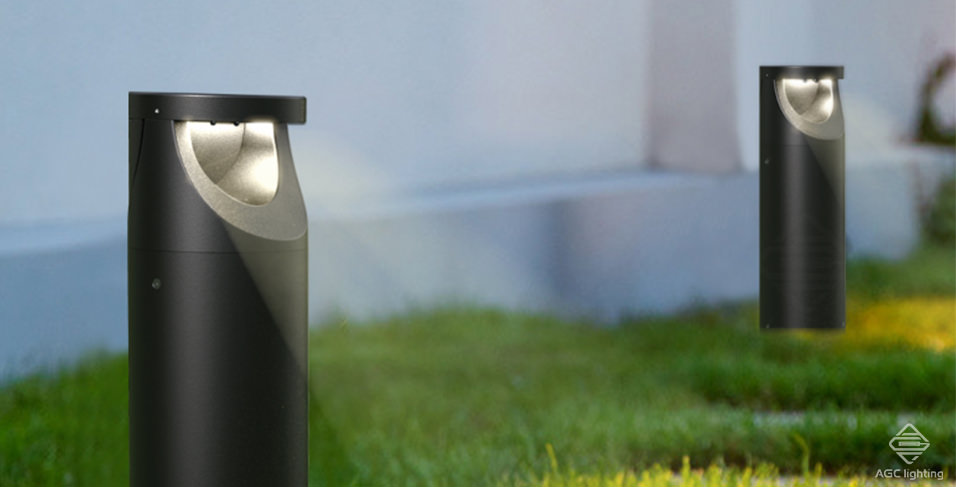
Why bollard lights are needed
illumination and aesthetic function
Bollard lights have both illumination and aesthetic functions. Bollard lights illuminate the floor and nearby areas, offering soft but not excessive light and guiding the way for people. They can decorate plants and buildings, creating appealing landscapes and a comfortable atmosphere.
less lighting pollution
Bollard lights provide ground level lighting without dazzling or offending visual experience for drivers and pedestrians. Since bollard lights illuminate at lower heights, they will not bother people while bright up the ground.
ensure safety
Bollard lights ensure safety at night. They act as a barrier to separate pedestrians and driveway, protecting both pedestrians and drivers. The special surface and top designs of the bollard light can prevent vehicular traffic from stopping the traveling vehicle without damaging the interior units.
reduce crime
Bollard lights are capable of reducing crime during nighttime. The lights emitted by bollard lights are deterrents to thieves and looters. Moreover, bollard lights also prevent thieves and looters from creating havoc effectively to some extent.
What are the requirements for bollard lights
Power supply
The foundation of bollard lights is the power. Without power, the bollard light is unable to be lit up. Bollard lights are powered by electric wires which are buried under ground in advance. But solar bollard lights are the exception because they do not require wiring. Therefore, you need to confirm whether the intended place for installation has the possibility of offering a power supply for bollard lights. If not, you might install the solar one.

Premium material
Being traffic guards and outdoor fixtures, bollard lights should be of high quality and durable. Bollard lights are critical for guarding traffic, preventing vehicle infringement, and allowing safe access for pedestrians. Some of the bollard lights are able to restrain a 2.75 ton vehicle traveling at 30mph. These security bollards are made of concrete.
Harsh environments such as extreme temperatures, heavy rain, and sunlight, make bollard lights require waterproof, corrosion resistance, and impact resistance. Consequently, bollard lights are supposed to be made of premium materials.
Bollard shells are made of extruded aluminum and treated with coating in general. The resilient material and special coating resist corrosion and do not easily deform under the sun and rain. Head of the bollard light also should be fixed with vandal resistant screws. Moreover, the holes of screws should be opposed to the top to prevent water penetration and pooling.
Height & spacing
The height and spacing of bollard lights vary from specific application. Generally speaking, a higher mounting height illuminates a lower level of light and covers a wider range of the fixtures. A wider spacing will be more appropriate for the fixtures with higher mounting height. Lower mounting height, however, requires closer space between fixtures.
Bollard lights are normally designed in three heights, 20cm, 50cm, and 90cm. Applications like hospitals, offices, and walkways apply to closer spacing of about 3m. Proper spacing for urban parks should be about 4.5m. A wider spacing of about 9m is suitable for the places for relaxing and leisure.
AGC provides the bollard light with optional heights of 50cm and 90cm, which may meet your needs for various applications. The table of the recommended height and spacing for different applications is as follows:
Mounting height of bollard light |
Recommended spacing to meet minimum light levels |
Applications |
|
20cm |
2.4m |
Hospitals, offices, walkways |
|
50cm |
4.6m |
Urban parks |
|
90cm |
9m |
Places for relaxing and leisure |
Lighting distribution
The lighting distribution of bollard lights plays a key role in the visual experience of people. Improper lighting distribution can lead to light pollution, including glare and light trespass. Excessive uplight can harm our eyes and even cause sudden blindness. Additionally, unwanted uplight and backlight can intrude into residential areas or nearby buildings, wasting light and energy.
To prevent these issues, the lighting distribution of bollard lights should be focused downward, toward the ground or floor. Most bollard lights use Type V or Type IV lighting distribution, which allows them to illuminate a wider area with fewer fixtures. Shielded bollard lights are equipped with visors or louvers that direct the light to the area in front of the fixture. In contrast, unshielded bollard lights illuminate the area surrounding the fixture, enhancing visibility of both people and nearby objects, such as buildings and plants.
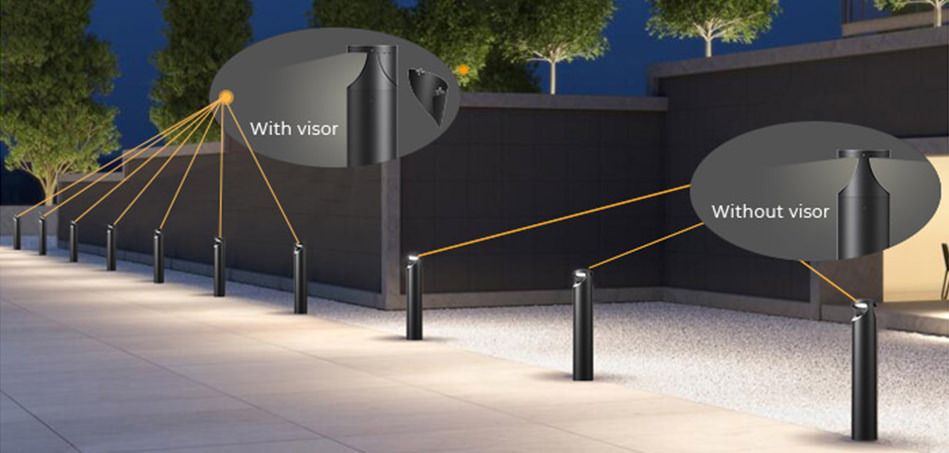
How to install bollard lights
Bollard lights are mainly divided into aluminum bollards and concrete bollards. Aluminum bollards are removable while the others are not. Both of them can be installed in soil or paving. We would introduce the installation of aluminum bollard lights. Installations of bollard lights vary by brand and specific type. Installation process of this post is just for reference. Please make sure to complete the installation by licensed contractors or electricians.
Before purchasing the bollard lights, preparation for wiring is important. In simple terms, dip a hole that is deep enough to load cement and bollard lights, then run wiring to the hole and place a conduit in the hole for wiring. Lastly, fill the hole with concrete and set up anchor bolts. Please keep in mind that previous steps should be finished by licensed electricians, your safety override all other concerns.
The rest of the installation of bollard lights is different from brands and fixture types. This post will introduce the installation of the BL01 bollard light from AGC. A simplified installation is as follows:
- Fix the baseplate on the present anchor bolts with nut
- Secure the bollard head and pole body
- Connect the supply lines from conduit to fixture wires
- Tighten the bollard light mounting screws and secure the fixture
